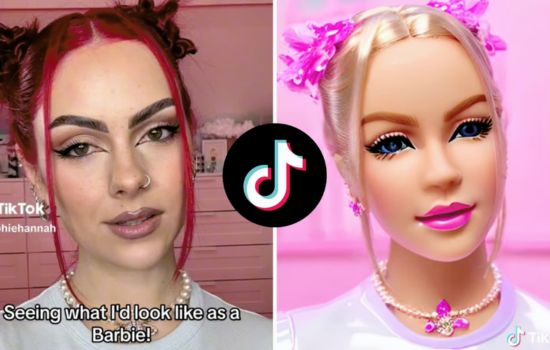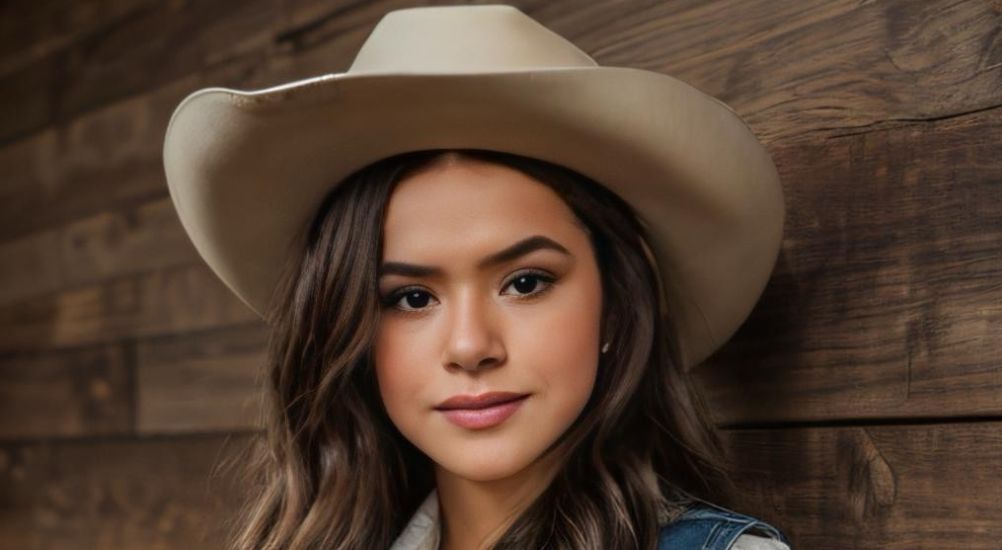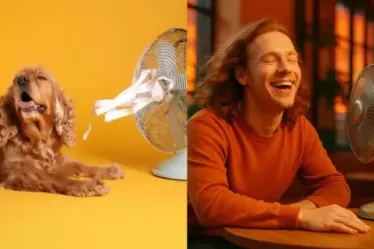Find out how I created my virtual action figures from the 90s using artificial intelligence! A nostalgic and practical guide for retro toy fans.
When homesickness hits hard (and AI comes to the rescue)
The other day, while sorting through some old boxes at my parents' house, I found a red Power Ranger doll.
At that moment, I was transported straight to the 90s. I found myself back on the living room floor, with a pack of Trakinas cookies in my hand, waiting for Knights of the Zodiac, Street Fighter, He-Man, Teenage Mutant Ninja Turtles to start…
Suddenly, I was 10 years old again, begging my mom to buy “just another” doll in the shopping mall toy store.
But then came that nostalgic melancholy: many of the action figures I always wanted, I never had.
And worse, some were never even manufactured! Who has never dreamed of secondary cartoon characters that never made it into plastic versions?
So it was in this moment of acute nostalgia that I had an idea: why not use artificial intelligence to create digital versions of those action figures that populated my childhood dreams?
And man, the result was so amazing that I had to share it with you!
In this article, I will tell you How I Used AI Tools to Create Virtual Action Figures in the best 90s style – complete with colorful blister, cardback full of art and that unmistakable aesthetic that marked our childhood.
And yes, I'll show you exactly how you can do the same, even if you don't know anything about design or programming.
Get ready for a journey through time, powered by algorithms!
Related Content
How to turn a photo into a drawing
I discovered how to turn a photo into a drawing for free with AI: using ChatGPT and other amazing apps – and the result was incredible.
read moreCreate your Inside Out avatar
Have you ever imagined creating an emotion from the movie, but with your own face? Well, there is now an app to create your Inside Out avatar.
read moreApp that turns you into a Boiadeira
Discover now the incredible app that turns you into a cowboy, create incredible photos and receive country look tips.
read moreWhy 90s Action Figures Were Simply Awesome
But before we dive into the creative process with AI, we need to understand what made 90s action figures so special.
After all, each decade has its own visual language, and capturing that essence is essential for an authentic result.
The '90s were the golden age of action toys, and that's not just nostalgia talking.
According to data from the Brazilian Toy Manufacturers Association, the action figure market grew more than 200% during that decade in Brazil!
What made these dolls so iconic?
- Ultra vibrant colors – neon everywhere! The flashier, the better
- Exaggerated muscles – anatomy? What anatomy? We need more biceps!
- Dramatic expressions – those “I’m about to blow up the planet” faces
- Extravagant accessories – weapons bigger than the characters themselves
- Flashy packaging – with illustrations that promised epic adventures
- Innovative joints – some worked, others not so much
- Unique Gimmicks – buttons that made some part move or make sounds
And we cannot forget the thematic lines: “Armor Attack HeMan“, “Space Venom“, “Arctic Batman“…any excuse was valid to release a new version of the same character!
How AI is revolutionizing our relationship with nostalgia
When I started this creative journey, I was amazed at how far AI technology has advanced.
For us nostalgic people, this opens up a universe of possibilities. I can literally describe that doll I always dreamed of having, and in seconds, the AI materializes that memory in digital form.
The most fascinating thing? AI not only reproduces, but understands cultural context.
When mentioning “90s style action figure”, the algorithms capture all those visual characteristics I mentioned before – it's as if the machine grew up watching the same cartoons as me!
The Step by Step: How I Created My Digital Action Figures
Now let’s get to the point! I’m going to share exactly how I created my dream digital action figures, with all the tips and tricks I learned along the way.
1. Choosing the right AI tool
There are several options on the market, but this was the one that gave me the best results and for FREE:
- ChatGPT – With the perfect prompt, digital art becomes very realistic and activates that childhood feeling that only those who grew up in the 90s/2000s know what it’s like.
2. Building the perfect prompt
Here’s the secret to success: the prompt (textual command) you give to the AI completely determines the outcome. After much experimentation, I’ve come up with a nearly perfect formula:
"Create a photo of a 1990s action figure blister pack featuring a delicate 3D printed figure of [CHARACTER] from the movie [MOVIE] and custom accessories ([ACCESSORY 1], [ACCESSORY 2], [ACCESSORY 3], [ACCESSORY 4], [ACCESSORY 5]) neatly arranged on the plastic blister. Include a bold title "[TITLE]" in the movie-style font on the packaging. The cardboard background should feature [BACKGROUND] covered by the title text and figures. Keep the style [DESIGN STYLE] with [COLOR THEME]."
Additionally, for specific characters, I added details such as:
"In the style of the [Kenner/Toy Biz/Playmates/etc] line, with neon color palette, visible joints, plastic texture, sealed in blister with illustrated cardback"
3. Creating variations of the same line
Every collector knows that an action figure never comes alone. So I created complete themed lines!
For my “Cosmic Knights” series (original characters inspired by Saint Seiya), I used the same base prompt, but added:
"Part of a collection of 5 action figures with similar theme, color variations in armor, same toy line, consistent aesthetics"
The results were so convincing that I posted them in a collectors group, and several members asked where they could buy them! So I had to explain that they were just digital creations.
4. The finishing touch: nostalgic packaging and card backs
The packaging is 50% of vintage action figure magic. To create authentic card backs, I developed a specific prompt:
"90s action figure card back, vibrant color art, [line name] logo, other characters from the collection shown on the back, promotional text, flashy graphics with lightning and explosions, instructions and warnings printed in small font, barcode"
I used ChatGPT to create hilarious promotional descriptions on the back, just like those exaggerated texts that promised the doll could do a thousand things (when in fact it only moved its right arm).
The reactions when I shared my creations
When I started posting my creations on social media, the reaction was unbelievable. My Instagram post about “Action Figures That Never Existed” had over 3 thousand likes in 48 hours!
Furthermore, comments ranged from “Dude, I SWEARED I had this Raul Seixas Space Rock version doll" until "Please tell me this really exists, I need to buy it for my son (and for myself too)”.
A 45-year-old follower admitted he cried when he saw the digital version of the “Road Wolf”, an action figure he always wanted from the film Mad Max, but which was never produced.
The most surprising thing? I received messages from three small toy manufacturers wanting to discuss the possibility of turning some of their designs into real products!
Who would have thought that a project born out of nostalgia could open professional doors?
Mistakes I Made (So You Don't)
But not everything went well on this journey. I'll share some mistakes to save you time:
- Ignore the scale: I forgot to specify proportions at the beginning and ended up with some strange results. Use terms like “1:12 scale” or “approximately 6 inches tall”.
- Mix eras: I asked for a “90s” action figure with “butterfly joint” (which only became popular in the 2000s). The result was a temporal confusion.
- Forgetting packaging details: In the first attempts, I didn't mention price stickers, wear marks or reflections, and the result looked too artificial.
- Do not save images in high resolution: I made the mistake of only downloading the previews. Pay for the high-res download, it's worth every penny!
- Trusting too much in the first result: The best designs come after 5-6 iterations of refining the same concept.
Advanced tips for professional results
After creating over 50 virtual action figures (yes, it got kind of addictive), I then developed some advanced techniques:
“Before & After” Technique
Ask the AI to show the same doll in two scenarios:
"90s action figure of [character], split into two images: on the left inside the sealed packaging, on the right outside the packaging in action pose"
“Full Line” Method
To create a sense of collection:
"1990s toy store display showing full line of [themed] action figures, hanging on hooks, commercial layout, fluorescent store lighting"
“TV Commercial” Technique
This is my favorite! Ask:
"Frame from a 1990s TV commercial for [character] action figure, child playing with the doll, VHS filter, promotional text, toy manufacturer logo"
The result looks exactly like a capture of those commercials that ran between cartoons!
How this experience changed my relationship with the past
What started as a weekend project to catch up on nostalgia turned into something much deeper.
Creating these digital action figures made me reflect on how technology can not only imitate the past, but rewrite it in a way.
That Raiden figure from Mortal Kombat that my mother could never buy? Now it “exists”, at least digitally.
The obscure character from that cartoon that no one remembers but I loved? Got his “virtual plastic” version.
I realized that nostalgia doesn’t have to be just a passive feeling of longing. Because with the right tools, we can interact with our memories in new and creative ways.
As psychologist Dr. Clay Routledge says in his study on nostalgia: “Reliving the past in creative ways can bring significant psychological benefits, especially in times of change and uncertainty.”
And man, what uncertain times we live in today, right?
Now it's your turn: create your own Virtual Action Figures!
It's time to resurrect those characters that marked your childhood! Here's a mini-guide to get you started:
- Choose a character: Start with something simple and well defined visually
- Select an AI tool: I recommend GPT Chat
- Use the prompt that I shared above
- Be specific: Mention colors, poses, accessories and packaging style
- Iterate: Refine your results gradually
- Share: Show off your creations in nostalgic groups!
The coolest thing is that you don’t need to have any artistic skills. The AI does all the heavy lifting – you just need to be clear about what you want to see.
When the past meets the future
Creating virtual 90s action figures using AI was one of the most satisfying experiences I've had recently.
It's a way to preserve the aesthetics, emotions and design of an era that defined many of our personalities.
What strikes me most is how something so high-tech can be used to celebrate something so retro. It's as if we're using the tools of the future to save the past.
So if you're like me, fueled by nostalgia and fascinated by technology, this is the perfect combination.
Have you ever created your own virtual action figures? Which character have you always dreamed of having in toy form? Share in the comments below and post your creations!
And remember: in art as in life, sometimes we need to look back in order to move forward.
Or as we would say in the 90s: this is so cool, man!
RELATED CONTENT

App that turns you into a Boiadeira
Discover now the incredible application that turns you into a cowboy,...
Read more →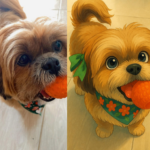
How to Turn Photo into Drawing for Free with AI
I discovered how to turn a photo into a drawing for free with AI: using...
Read more →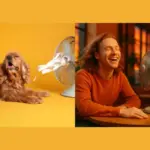
Turn your dog into a human with AI
Discover the most fun trend of the moment: transform your dog...
Read more →
Glayson He breathes sports! If there's a ball rolling, he's watching. Football, basketball, Formula 1... he gets involved in everything, but his heart beats stronger for football. He likes to debate, analyze and, of course, make fun of his friends after a rout. On the website, he brings curiosities, app reviews and no-nonsense opinions, just the way every sports fan likes!

